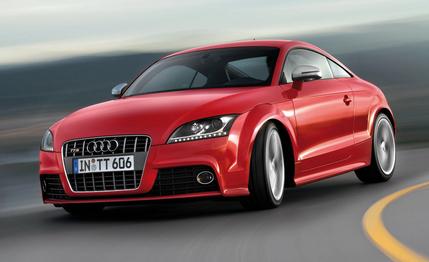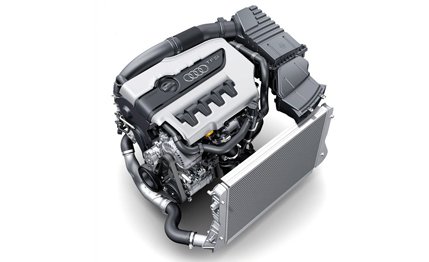 First Drive Review
First Drive Review
The Audi TT has been a great success. It was launched 10 years ago in Germany, and now 45,000 a year are made at Audi’s plant in Győr, Hungary. That’s a big volume for a small coupe.
We liked the TT enough to make it a 10Best Car in its first and second years, but it has never made its mark as a proper sports car. Automotive writers snickered that the TT was a VW GTI in a sexy designer dress.
The second-generation TT appeared as a 2008 model. Bigger and built on its own steel and aluminum platform (in the interests of a more even weight distribution), it’s a bit more sporty but not in the same pure sense as the rear-drive Nissan 350Z, BMW Z4, or the Porsche Boxster and Cayman with which it overlaps in price.
It was launched with the 200-hp, 2.0-liter turbo four-cylinder from the GTI and the carry-over 3.2-liter V-6 delivering 250 horsepower. Both were available with the S tronic twin-clutch six-speed gearbox. Clearly, there were more variants to come, the most significant for the U.S. being the TTS you see here, which goes on sale in November. Available as a two-plus-two coupe or a two-seat roadster, the TTS makes 265 horsepower from a development of the direct-injection 2.0-liter turbo engine, has an improved Quattro four-wheel-drive system, and has magnetic adaptive shocks and 18-inch wheels as standard equipment.

With the paddle-shift S tronic, the TTS coupe has a claimed 0-to-60-mph time of 4.9 seconds, and the roadster is 0.2-second slower. Top speed is limited to 155 mph.
So, the TTS is competitive—comparable to a more expensive Porsche Cayman S—but the way in which it achieves its performance is disappointing.
The engine produces noticeable vibration through the pedals and significant turbo lag, making the car fussy to drive. And electronics interfere with rapid progress on a winding road. The original TT Quattro could be driven on the throttle, shifting the drive from the front to the rear as the wheels lost grip. Although its stability-control system has a sport mode, allowing a limited amount of tail slide, on slippery roads the electronic traction control intervenes before the benefits of four-wheel drive come into play. But the Delphi magnetic shocks play well with the car’s stiffer springs and anti-roll bars.
Overall, the most powerful TT can’t match a Porsche for poise. So the TTS is more of a sports car than the TT has ever been but not necessarily better for that.